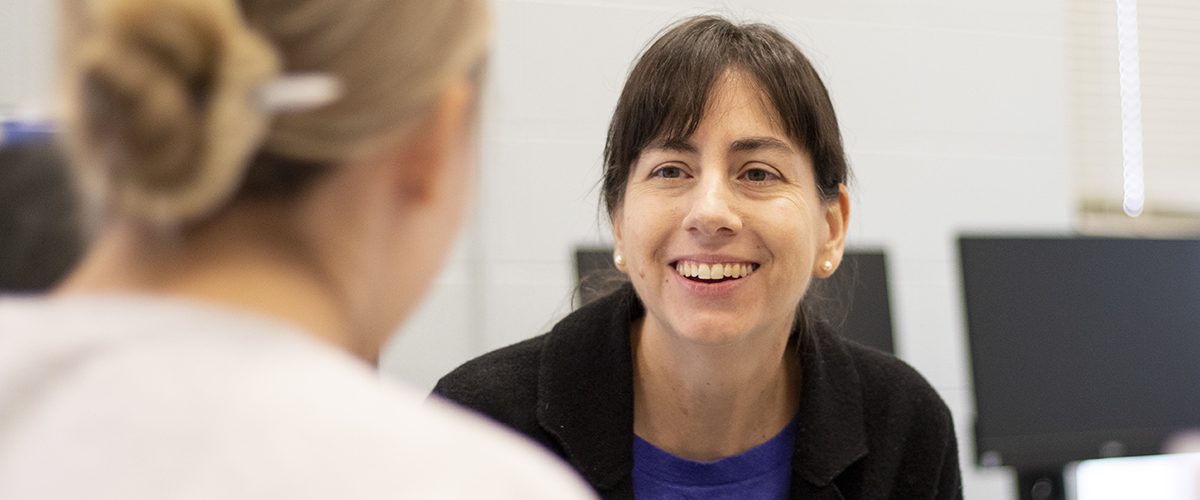Come Hail or High Water: UT Journalism Students Delve into Extreme Weather

Melanie Faizer, senior lecturer in UT’s College of Communication and Information’s School of Journalism and Electronic Media, encourages her digital news reporting students to sleuth out hard-hitting stories on significant news topics.
This fall their mission is to report on extreme weather issues, and the students are writing about everything from mosquito-borne illnesses to future fire risks in the Smokies to the way tobacco farmers are converting their fields to hemp.
Their stories, with accompanying info-graphics, will be presented online. Associate Professor Nick Geidner’s “Social Journalism” class is creating a Facebook page to promote the work, too.
Last year, Faizer’s students focused on the issue of evictions and housing affordability, and the website bearing their stories won the Tennessee Associated Press award for best college website.
Faizer said she is especially interested in social and socioeconomic issues in relation to extreme weather events.
“These topics are important, and no one in the community is really covering them,” she said.
To brainstorm ideas, Faizer and her students culled through reams of weather-related data—heat trends, tornados, hailstorms, droughts, and other phenomena.
Faizer also brought in some outside experts: Kelsey Ellis, associate professor of geography, who spoke about nighttime tornadoes in this area; renowned science journalist and former NOVA executive producer Paula Apsell, who recently did a week-long residency in JEM; and Lindsey Gilpin, founder of Southerly, an e-magazine dedicated to ecology, justice, and culture in the American South.
Faizer urges the students to find and interview UT and community experts, making sure they explain complicated topics in understandable ways. Whether or not the students are aspiring journalists, the class teaches skills that translate well to any career—how to talk to people, process information, and communicate it effectively.
“The most common complaint I hear is that they feel like they are out of their comfort zone,” Faizer said. “And that is about the most authentic journalistic experience I can give them.”
Ainsley Kelso, of Medina, Tennessee, a junior in journalism and electronic media, editor-in-chief of Tennessee Journalist, an online campus publication, and wants to be a multimedia journalist.
“I am studying La Crosse encephalitis, a mosquito-borne illness that typically affects children under the age of 15. East Tennessee and some of the surrounding areas have more cases of this disease than anywhere else in the country.
“This story has required a lot of time and heavy research,” she said, adding that she wants to “tell a story that is educational, not panic-inducing, and interesting to read.”
J.T. Russell, of Knoxville, a junior in journalism and electronic media who hopes to be a sports journalist, is writing about the City of Knoxville’s sustainability plan and focusing on its task of reducing greenhouse gas emissions by 80 percent by the year 2050.
“It’s been an opportunity to reinforce my research and writing skills as well as developing a higher standard of professionalism,” he said. “The people I need to talk to are very busy individuals, so it’s been hard to balance being respectful of their time with the need to collect information in a timely manner. It has also given me more keen awareness of the issues that are being addressed by our city government.”
Peyton Martin, of Chattanooga, a senior in journalism and electronic media, aspires to be a radio host of a sports program. His story is focusing on future wildfire prevention in the Great Smoky Mountains near Gatlinburg.
“To have a daily show, I will have to do research just about every night before programming—and that is probably my biggest takeaway from this class,” he said. “This class has taught me how to do quality research, like how to navigate Google quicker and fine-tune my searches. We have also worked on professional-looking charts and Microsoft Excel sheets, so I think this class has at least scratched the surface in how to use those two tools in the ‘real world.’
“I have learned that it takes time to cultivate a feature story outside of the sports world,” he said. “Sometimes it takes weeks to get the right research and the right sources to make the best story you can tell. The first interview might not be the best one, but if you keep digging the best story and quotes will reveal themselves in your research.”